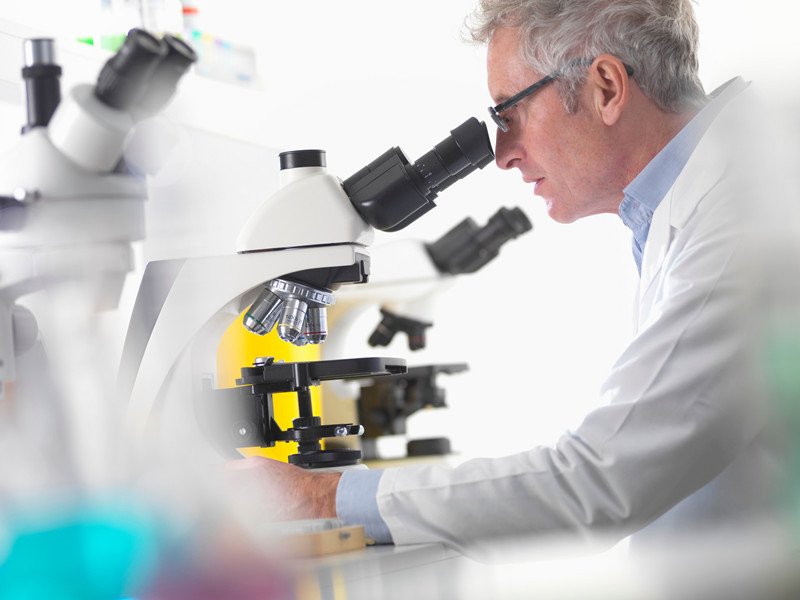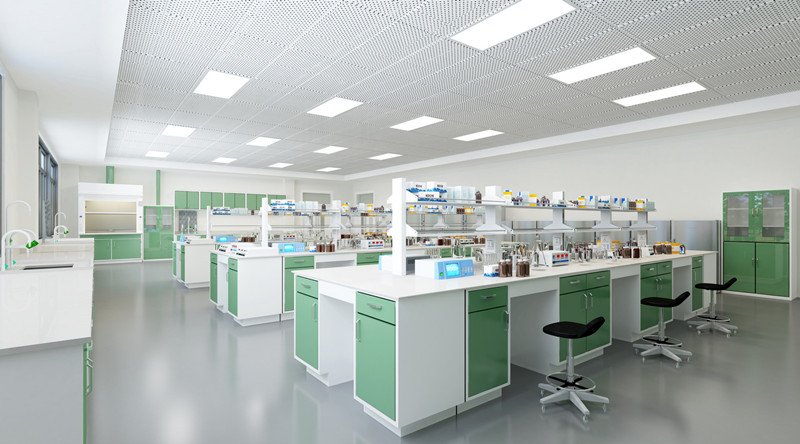Abstract: This article briefly introduces the preparation technology of glycine and its advantages and disadvantages and lists several common purification technologies.
1 Glycine preparation technology
There are many kinds of glycine production process technologies. At present, the process technologies that have been industrialized and have industrialized production prospects mainly include the chloroacetic acid ammonolysis method, the Strecker method, the Hydantion method, and the biotechnology synthesis method.
1.1 Ammonialysis process of chloroacetic acid
The chloroacetic acid ammonolysis technology is a synthetic process technology that uses urotropine, chloroacetic acid, and ammonia (ammonia or liquid ammonia) as raw materials in the water or alcohol phase. The process is to first add a certain content of the catalyst urotropine aqueous solution into the reaction kettle, then add chloroacetic acid dropwise under good stirring conditions, and at the same time pass ammonia gas, react at a certain temperature for a certain time, and then pass the alcohol Analytical method to obtain glycine with a purity of about 95%.
The advantages of this process technology are that the raw materials are easily available, the synthesis process is simple, easy to operate, the requirements for equipment are not high, and there is no pollution. The disadvantage is that the reaction speed is slow, the time is long, and the by-product ammonium chloride is large and difficult to remove, making the purification of glycine very difficult, and only technical grade glycine can be obtained. In addition, a large number of aqueous solutions containing multiple miscible substances are produced during the reaction, and the required water treatment process is complicated and expensive. Moreover, urotropine used as a catalyst is difficult to recycle, resulting in high raw material consumption and increased production costs.

1.2 Strecker process
The reaction process of the Strecker method is to mix the production raw material formaldehyde aqueous solution, ammonium chloride, and sodium cyanide to react. After the reaction is over, add a certain amount of acetic acid to precipitate the methylene amino acetonitrile, separate the product, and then dissolve it in ethanol, add an appropriate amount of sulfuric acid to convert it into amino acetonitrile sulfate, and then add a stoichiometric amount of barium hydroxide to decompose the amino acetonitrile sulfuric acid Salt to obtain barium amino acetate. Finally, a quantitative amount of sulfuric acid was added to precipitate the barium, filtered, and the filtrate was concentrated and left to cool to precipitate glycine crystals.
The process has the advantages of low cost, good product quality, and easy refining of the product, which is suitable for large-scale industrial production. But the disadvantage is that the process route is long, the desalination operation after the reaction is more complicated, the raw material sodium cyanide is highly toxic, and the operating conditions are relatively harsh.
To improve the product quality of glycine, reduce production costs and reduce environmental pollution, foreign countries have developed an improved Strecker process that replaces sodium cyanide with hydrocyanic acid. The reaction uses formaldehyde, hydrocyanic acid, ammonia, and carbon dioxide as raw materials. The reaction liquid is reacted in a tubular reactor. Glycine is precipitated under low-temperature conditions. The mother liquor is recycled. By changing the concentration of by-products in the reaction system, the balance is achieved. Move to the direction of generating glycine to increase the yield of glycine and reduce production costs.
The process uses cheap acrylonitrile by-product hydrocyanic acid instead of sodium cyanide and has the advantages of the short production process, high product yield, low cost, no pollution, etc., and foreign companies have adopted this method to produce glycine. However, because hydrocyanic acid is toxic and volatile, it cannot be transported over long distances and can only be produced near the storage place of its raw materials.
1.3 Direct hydantoin process
The Hydantion process technology comes from the process of looking for alternatives to hydrocyanic acid. Hydrocyanic acid, the raw material for glycine production, has the limitation of being toxic and volatile. Hydroxyacetonitrile is an additional product of hydrocyanic acid and formaldehyde, which is easily decomposed into hydrocyanic acid and formaldehyde at a certain temperature. Therefore, the production of glycine with hydroxyacetonitrile as a raw material not only solves the shortcomings of hydrocyanic acid that is difficult to handle due to its characteristics but also maintains the advantages of the improved Strecker process. The Hydantion process has become one of the most concerned process routes for foreign glycine manufacturers.

1.4 Biosynthesis process
The use of biotechnology to synthesize glycine has become a very important synthetic method that also has a certain potential. Foreign countries have long persisted in the development of biosynthetic glycine technology research. In the past, due to the existence of low enzyme activity, high demand for glycine-synthesizing microorganisms, low glycine yield, and other factors, the industrialization of biotechnological synthesis of glycine was restricted to a certain extent. After entering the 1990s, foreign biosynthesis of glycine has made new progress and breakthroughs. Nitto Chemical Industry Co., Ltd. of Japan will cultivate Pseudocella, Casein bacteria, Alcaligenes and other bacterial genera with 0.5% ( Mass fraction, dry weight) was added to the glycine amine matrix and reacted for 45 hours at 30°C and pH 7.9-8.1. Almost all glycine amine was hydrolyzed to glycine, with a conversion rate of 99%.
Although the process of biotechnology to synthesize glycine is still in the experimental stage of research and development, because of its high selectivity, high yield, and no environmental pollution, it will be a glycine production technology with great development potential.
1.5 Other processes
In addition, there are α-amino acid amide hydrolysis method, acetic acid method, catalytic dehydrogenation method, hydroxyacetonitrile method, radiation synthesis method, and so on. However, these technologies are still in the experimental stage, and there are still great difficulties in industrialization.
2 The purification technology of glycine
The industrial-grade crude glycine content is 90%-95%, the impurity content is 5%-10%, and has a darker color. If it is not purified, it cannot meet the requirements of food grade and pharmaceutical grade glycine. The purification methods mainly include the following.
2.1 Alcohol analysis
Dissolve the crude glycine in hot water, add powdered activated carbon for adsorption and decolorization, filter and separate the activated carbon, heat and concentrate, cool the concentrate to room temperature, and add a certain volume of methanol to crystallize the glycine. After repeated refining 2 to 3 times, The refining yield is generally 60%-70%. The alcohol precipitation method is used to purify glycine, the cost of refining is high, toxic methanol is used, and the recovery of methanol requires increased equipment investment and consumes a large amount of steam.
2.2 Ion exchange method
The ion exchange method uses the principle that the isoelectric point of the aqueous solution of glycine is close to neutral. When passing through the ion exchange resin, the glycine is not easily absorbed by the cation or anion exchange resin, and the cation, anion, inorganic ions, pigments, and other impurities in the aqueous solution are easily adsorbed. Remove impurities.
The industrial grade glycine is configured as 15%-25% aqueous solution, and under the condition of pH<7, it is treated with strong base anion exchange resin or strong acid cation exchange resin, then decolorized with activated carbon, and then concentrated, cooled and crystallized. The yield of glycine prepared by this method is more than 90%, but it consumes a lot of energy and has a high production cost
2.3 Ion membrane separation method
Under the action of an electric field, positive ions such as ammonium ions in the glycine solution move toward the negative electrode through the cation membrane, and negative ions such as chloride ions move toward the positive electrode through the anion membrane, while glycine does not ionize at the isoelectric point and stays in place. After a certain period, the glycine solution is crystallized and dried to obtain a high-purity glycine product.

2.4 Crystallization method
At a certain temperature, industrial-grade glycine is dissolved in deionized water, and at the same time, activated carbon is added for decolorization. The decolorized solution is impurity-removed and filtered to remove impurity ions and mechanical impurities in the solution. After the solution is concentrated by reverse osmosis, it is cooled and crystallized, and then dehydrated to obtain filter cake and crystallization mother liquor. The filter cake is heated and dried to obtain refined glycine crystals. Then the crystallization mother liquor is decolorized, impurity-removed, and crystallized to obtain glycine crystals again.
The recycling purification method is also based on the principle that the solubility of glycine in water changes with temperature. The crystallization method is used to replace part of the crystallization mother liquor with a new saturated solution of glycine so that the mother liquor can be recycled for the purification of industrial-grade glycine.

